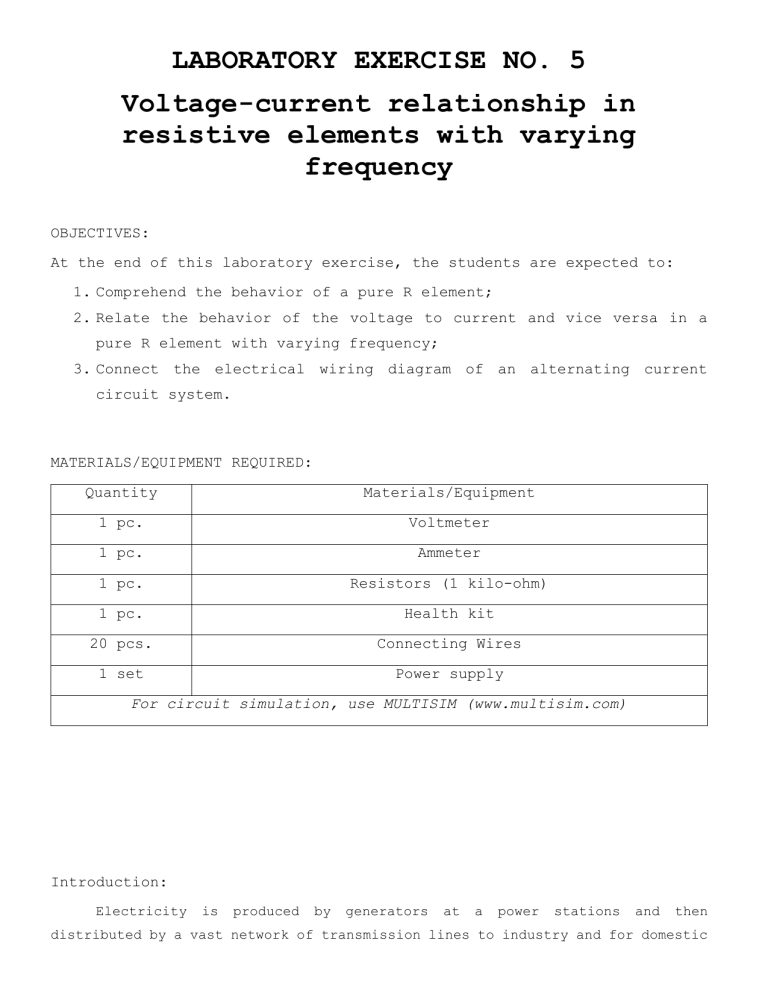
LABORATORY EXERCISE NO. 5 Voltage-current relationship in resistive elements with varying frequency OBJECTIVES: At the end of this laboratory exercise, the students are expected to: 1. Comprehend the behavior of a pure R element; 2. Relate the behavior of the voltage to current and vice versa in a pure R element with varying frequency; 3. Connect the electrical wiring diagram of an alternating current circuit system. MATERIALS/EQUIPMENT REQUIRED: Quantity Materials/Equipment 1 pc. Voltmeter 1 pc. Ammeter 1 pc. Resistors (1 kilo-ohm) 1 pc. Health kit 20 pcs. Connecting Wires 1 set Power supply For circuit simulation, use MULTISIM (www.multisim.com) Introduction: Electricity is produced by generators at a power stations and then distributed by a vast network of transmission lines to industry and for domestic use. It is easier and cheaper to generate alternating current than direct current and ac is more conveniently distributed than dc since its voltage can readily be altered using transformers. Figure 1. Pure Resistive Load Procedures: 1. Connect a 230V 1kHz 0O AC source to a resistive load measuring 1 kilo-ohm. Record the voltage wave and current wave formed by the circuit. Use voltmeter and ammeter for the analysis and annotation. 2. Connect a 230V 10kHz 0O AC source to a resistive load measuring 1 kilo-ohm. Record the voltage wave and current wave formed by the circuit. Use voltmeter and ammeter for the analysis and annotation. 3. Connect a 230V 100kHz 0O AC source to a resistive load measuring 1 kilo-ohm. Record the voltage wave and current wave formed by the circuit. Use voltmeter and ammeter for the analysis and annotation. Analysis 1. In procedure 1, show the circuit connection and express the instantaneous equations of the voltage and the current. Insert the two waves in one picture and discuss by comparing the behaviors of the two waves. 2. Repeat the same for procedures 2 and 3. 3. Compare the voltage wave of 1 to 2 and 3. Likewise, compare the current wave of 1 to 2 and 3. Conclusion: Discussion should focus on the behavior of the waves as the frequency changes.






